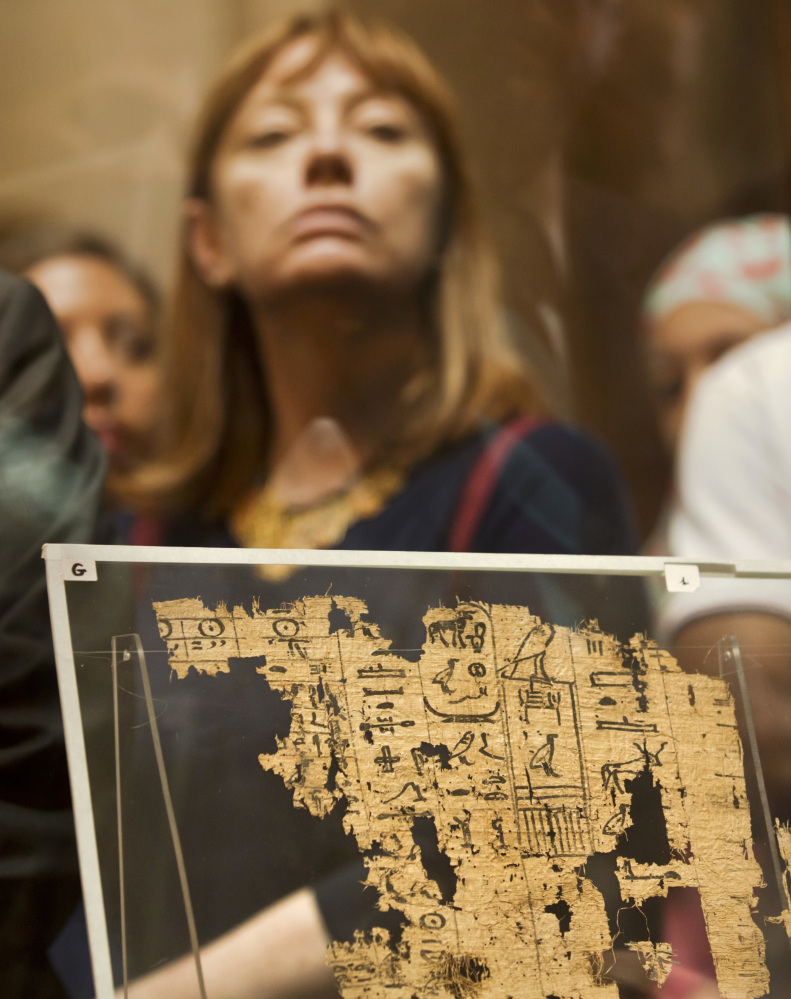CAIRO — The Egyptian Museum in Cairo on Thursday began putting on display the country’s oldest papyruses, which date back 4,500 years, detailing the daily life of the pyramid-builders.
The items are from the 4th Dynasty of King Khufu, also known as Cheops, for whom the Great Pyramid of Giza was built as a tomb.
Egypt’s Antiquities Minister Khaled el-Anany said the papyruses were discovered in 2013 by an Egyptian-French mission inside caves in the ancient port of Wadi el-Jarf, 74 miles from the city of Suez.
El-Anany said the items are “the oldest” papyruses in Egypt. Museum chief Tarek Tawfiq said the papyruses depict the daily routine of the workers, who also transferred building material from the Red Sea port to Giza.
On display are six out of the 30 discovered papyruses, according to Hussein Abdel-Bassir, another ministry official. “These show the administrative power and the central nature of the state at the time of Khufu,” he said.
One of the papyruses belonged to a senior employee named Marr who played a role in the building of the pyramid and it covered a period of three months of his job, providing information about his duties – including transporting rocks through the River Nile and its canals, Abdel-Bassir said.
A second ministry official, Sabah Abdel-Razek, told the state-news agency MENA that other papyruses showed the distribution of food portions for workers, including one showing in clear Egyptian hieroglyphs the number of sheep brought in.
Send questions/comments to the editors.



Success. Please wait for the page to reload. If the page does not reload within 5 seconds, please refresh the page.
Enter your email and password to access comments.
Hi, to comment on stories you must . This profile is in addition to your subscription and website login.
Already have a commenting profile? .
Invalid username/password.
Please check your email to confirm and complete your registration.
Only subscribers are eligible to post comments. Please subscribe or login first for digital access. Here’s why.
Use the form below to reset your password. When you've submitted your account email, we will send an email with a reset code.